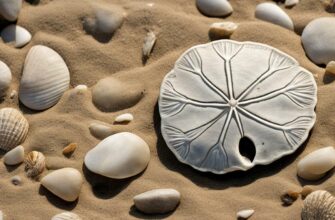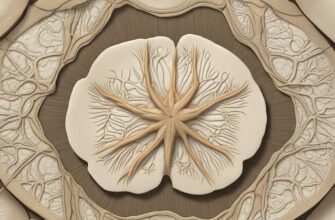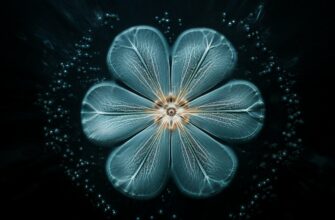Have you ever wondered if you can eat sand dollars? The idea of consuming these marine animals may seem unusual, but the curiosity still persists. Let’s dive into the topic and uncover the truth behind whether sand dollars are edible.
Many people are under the impression that sand dollars are a delicacy and can be consumed like other seafood. However, the reality is quite different. Sand dollars are not considered as food in most cultures, and consuming them can be harmful to your health.
- Key Takeaways:
- Sand Dollars: Fascinating Marine Creatures
- Do Sand Dollars Have Natural Predators?
- The Edibility of Sand Dollars: Fact or Fiction?
- Cooking with Sand Dollars: Myth or Reality?
- The Verdict: Can You Eat Sand Dollars?
- FAQ
- Q: Can you eat sand dollars?
- Q: Are sand dollars edible?
- Q: Can sand dollars be consumed?
- Q: Are there any recipes with sand dollars?
Key Takeaways:
- The question of whether sand dollars are edible has intrigued many people.
- However, sand dollars are not considered as food in most cultures.
- Consuming sand dollars can be harmful to your health.
Sand Dollars: Fascinating Marine Creatures
Sand dollars are a type of marine animal that belong to the echinoderm family. They are found in sandy areas of shallow waters all over the globe and are commonly associated with beachcombing and coastal tourism. Sand dollars are closely related to sea urchins and starfish and are characterized by their circular shape, flat bodies, and trademark five-point radially symmetrical pattern.
These fascinating creatures play an essential role in marine ecosystems as they act as filter feeders, consuming plankton and dead organic matter found in the sand. Sand dollars also serve as an important food source for other marine animals such as crabs, fish, and sea birds. Despite their ecological significance, many people may wonder if sand dollars are edible or have any culinary uses.
While sand dollars have been used for decoration and crafts, there is no evidence to suggest that they are edible or have any culinary value. Additionally, consuming sand dollars can be harmful to both the animals and the environment. Sand dollars are not considered a food source for human consumption, and consuming them can be potentially toxic as they absorb pollutants and toxins from the sand and water they live in.
Do Sand Dollars Have Natural Predators?
In the wild, sand dollars have several natural predators that feed on them, including crabs, sea stars, and certain species of fish such as triggerfish. These predators aid in controlling the sand dollar population, ensuring a balance in marine ecosystems. However, human activities such as habitat destruction and pollution have resulted in the endangerment of many marine species, including sand dollars.
As fascinating as these creatures may be, it is important to respect their ecological significance and refrain from consuming or harvesting them. Instead, we can appreciate their beauty and role in marine ecosystems and work towards protecting them for future generations to enjoy.
The Edibility of Sand Dollars: Fact or Fiction?
Now that we have explored the fascinating world of sand dollars, let’s address the burning question: can you eat sand dollars? The short answer is yes, technically, sand dollars are edible. However, the long answer is a bit more complicated and requires some context.
Historically, there have been reports of indigenous communities consuming sand dollars, either raw or cooked. Some also claim that sand dollar roe, the female’s reproductive organ, is a delicacy. However, there is limited information available on the culinary uses of sand dollars, and consuming them is not a common practice nowadays.
Before you consider putting sand dollars on your plate, it is essential to understand that consuming them poses ethical and conservation implications. Sand dollars are not a sustainable food source, and their populations are vulnerable to over-harvesting or habitat destruction. Additionally, eating sand dollars may harm other marine species that rely on them as food.
“While sand dollars may be technically edible, we would not recommend consuming them. It is essential to prioritize the health and preservation of our marine ecosystems.”
Lastly, it is worth mentioning that sand dollars are not known for their taste or texture. Some describe them as bland or chalky, while others compare their taste to seaweed or shellfish. Therefore, if you are curious about trying a sand dollar, it is crucial to proceed with caution and seek expert advice.
Cooking with Sand Dollars: Myth or Reality?
Despite their unique appearance, sand dollars have not been widely recognized as a culinary ingredient. In fact, there is little to no documented evidence of sand dollars being used in cooking or cuisine.
While some may speculate about the potential taste and texture of this marine animal, it is important to note that consuming sand dollars may not be the most ethical or sustainable choice. Sand dollars play a vital role in marine ecosystems as decomposers and prey for larger creatures. If over-harvested or consumed, this could have a detrimental impact on the environment.
It is also worth mentioning that sand dollars contain a substance called echinochrome, which has been linked to toxicity in some studies. While the risks of consuming sand dollars are not fully understood, it is recommended to err on the side of caution.
If you’re still curious about incorporating sand dollars into your cooking, it may be worth exploring alternative options that resemble the shape and texture of sand dollars. For example, certain types of pasta or flatbread could be used as a creative substitution.
The Verdict: Can You Eat Sand Dollars?
After examining the facts and exploring the history and cultural significance of sand dollars, it is clear that they are not commonly consumed as a food item. Despite some historical references to sand dollar consumption, there are no known culinary uses or documented recipes involving sand dollars.
While it may be tempting to try eating sand dollars, it is important to consider the potential ethical and conservation implications. Sand dollars play an important role in marine ecosystems and are a valuable part of the ocean’s biodiversity. Consuming sand dollars could contribute to a decline in their population and harm the environment.
Instead of seeking out sand dollars for culinary purposes, consider exploring other edible marine animals and sustainable seafood options. By making informed and conscientious choices, we can help protect our oceans and the creatures that call them home.
FAQ
Q: Can you eat sand dollars?
A: Eating sand dollars is not recommended. While technically possible to consume, sand dollars are not commonly consumed as food and are not considered edible delicacies. They are primarily known for their role as fascinating marine creatures rather than as a culinary ingredient.
Q: Are sand dollars edible?
A: Sand dollars are not typically consumed as food. They are often admired and studied for their unique characteristics and their important role in marine ecosystems. While there may be historical or cultural references to sand dollar consumption, there are no known culinary uses for sand dollars.
Q: Can sand dollars be consumed?
A: While it is possible to eat sand dollars, it is not recommended. There are potential health risks associated with consuming sand dollars, as they may contain toxins or be contaminated with harmful substances. It is important to prioritize the ethical and conservation implications before considering consuming sand dollars.
Q: Are there any recipes with sand dollars?
A: There are no documented recipes or cooking techniques specifically involving sand dollars. Cooking with sand dollars is primarily seen as a myth rather than a reality. Sand dollars are not known for their taste or texture, and there are alternative food options available if you are looking for a dish resembling sand dollars.









